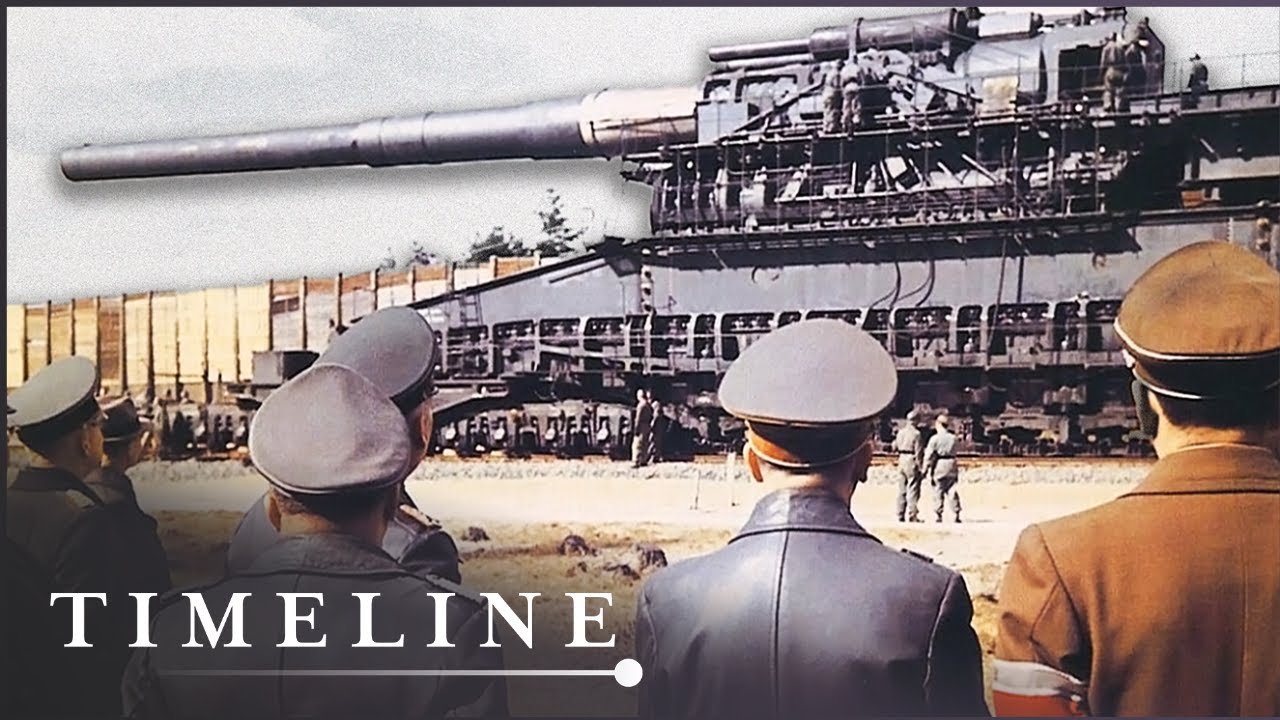Throughout history, the development of powerful weapons has been a key aspect of military strategy. From the first crude cannons to modern-day missile systems, technology has constantly pushed the limits of what is possible in the world of warfare. In this article, we’ll take a look at some of the most devastating big guns in history, from the massive artillery of World War One to the top secret superguns of today.
One of the earliest examples of a powerful big gun was Germany’s Big Bertha, a 42cm howitzer that was used with devastating effect during World War One. With a range of over 9 miles, the Big Bertha was capable of lobbing massive shells into enemy territory, causing widespread damage and destruction. Other nations soon developed their own heavy artillery, and the stage was set for a new era of large-scale warfare.
During World War I, big guns played a crucial role in the war effort. Germany’s “Big Bertha” howitzers were some of the most powerful weapons of the war, capable of firing shells over long distances and causing significant damage to enemy positions. The Allies also had their own powerful artillery, such as the British “Long Tom” and the French “155mm GPF”. These weapons allowed armies to target enemy fortifications and break through defensive lines.
The use of big guns in World War I had a significant impact on the outcome of the war. Without them, the war may have been prolonged, and it’s possible that the outcome could have been different. The destructive power of these weapons forced armies to adopt new tactics and strategies, and they were instrumental in breaking the stalemate of trench warfare.
However, the use of big guns also had devastating consequences. The massive artillery bombardments resulted in countless civilian casualties, and the psychological impact on soldiers was immense. The constant noise, the destruction of the landscape, and the fear of sudden death all took a toll on those who fought in the war.
Overall, the big guns of World War I were both a necessary and a devastating aspect of the war. While they were instrumental in breaking the stalemate of trench warfare and forcing the enemy to adapt their tactics, they also caused widespread destruction and loss of life. Without them, the outcome of the war may have been very different, but their use came at a terrible cost.
As the world moved into the atomic age, the power of big guns increased exponentially. In the 1950s and 1960s, the United States developed a series of nuclear artillery pieces, including the Davy Crockett, a small tactical weapon that could be fired from a recoilless rifle. Although never used in combat, the Davy Crockett was a chilling reminder of the destructive power of nuclear weapons.
In the 1980s, Iraq took the concept of big guns to a whole new level with Project Babylon, a secret program to build a supergun capable of launching projectiles into space. Led by the infamous engineer Gerald Bull, the project was eventually shut down by international sanctions, but not before several prototype guns had been built.
Today, big guns continue to play a key role in modern warfare, with artillery pieces, missile systems, and other weapons capable of striking targets from great distances. These weapons are often shrouded in secrecy, as nations compete to develop the next generation of military technology.
In recent years, advances in technology have led to the development of even more powerful and sophisticated big guns. For example, the US Navy’s electromagnetic railgun is capable of firing projectiles at hypersonic speeds, with a range of over 100 nautical miles. Additionally, unmanned aerial vehicles (UAVs) and drones equipped with missiles have revolutionized the way wars are fought, allowing for precise strikes on targets without putting human pilots in harm’s way.
However, as with any weapon, there are ethical and moral concerns surrounding the use of big guns in modern warfare. The ability to strike targets from great distances can lead to civilian casualties and collateral damage, raising questions about the ethics of using such weapons. Additionally, the development of autonomous weapons and the potential for these weapons to make decisions without human intervention has led to widespread debate over the role of machines in warfare.
Despite these concerns, it’s clear that big guns will continue to play a significant role in the future of warfare. As technology continues to evolve, so too will the capabilities of these weapons, leading to new and ever-more-deadly ways to project force across the battlefield.
However, the development of powerful big guns has also led to some unintended consequences. In the age of nuclear weapons, the risk of accidental or intentional use has increased, raising the specter of global catastrophe. The use of big guns in warfare has also resulted in countless civilian casualties, as communities are caught in the crossfire of battles waged from afar.
In conclusion, the history of big guns is a story of human ingenuity and technological progress, but also of destruction and devastation. As nations continue to develop ever more powerful weapons, it’s important to remember the devastating impact these weapons can have on human lives and global security. Only through responsible use and international cooperation can we hope to avoid the worst outcomes of the devastating history of big guns.


